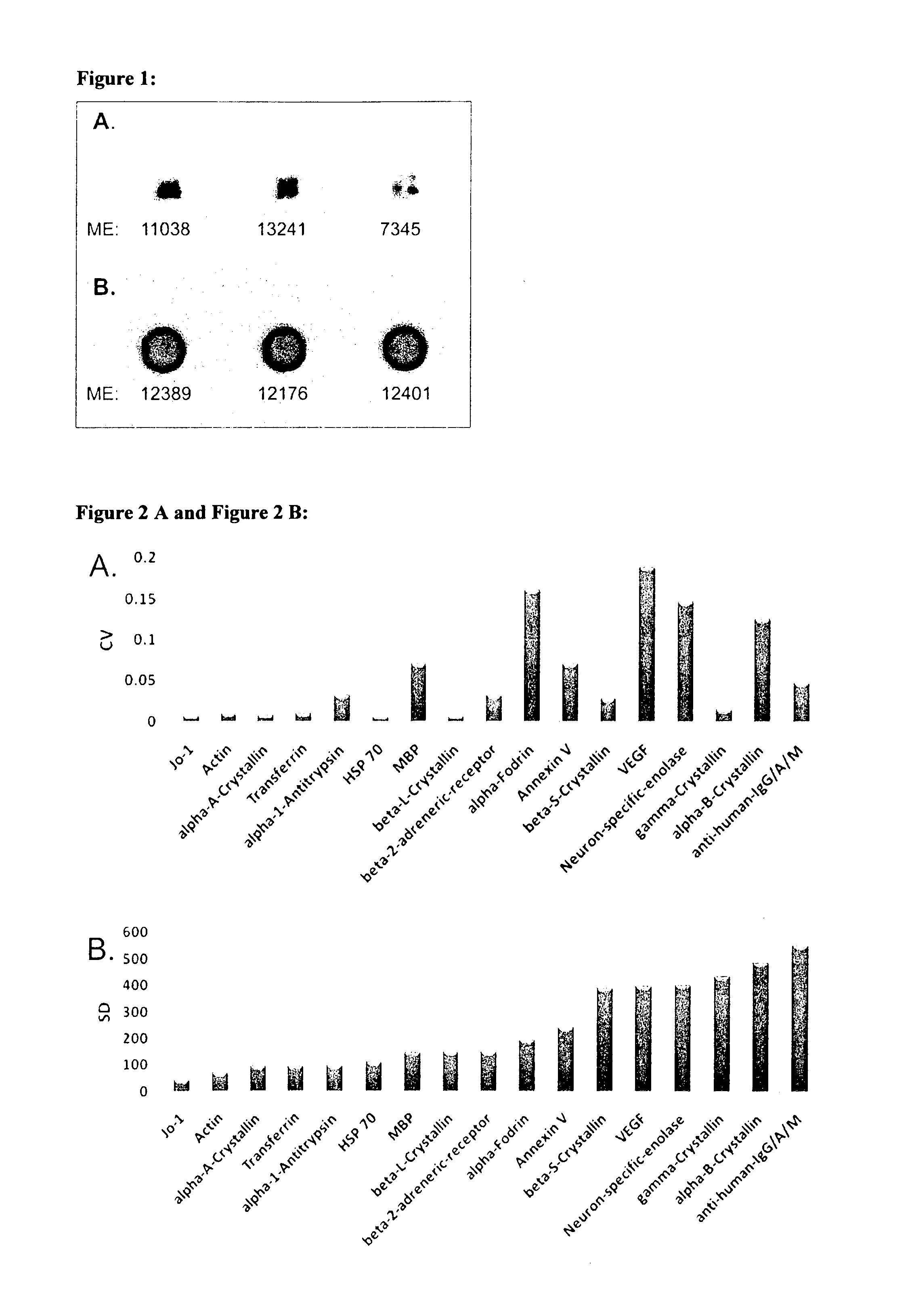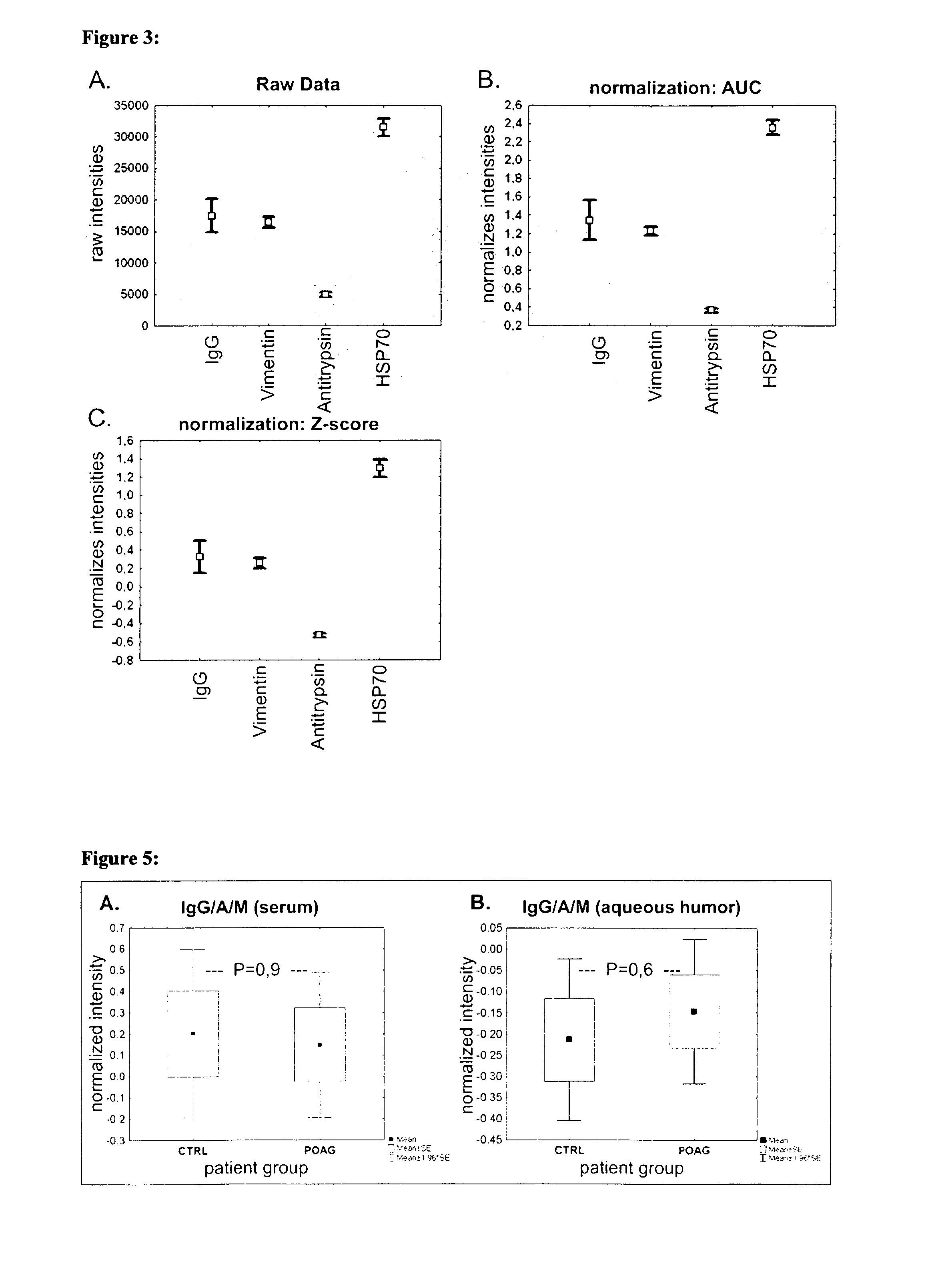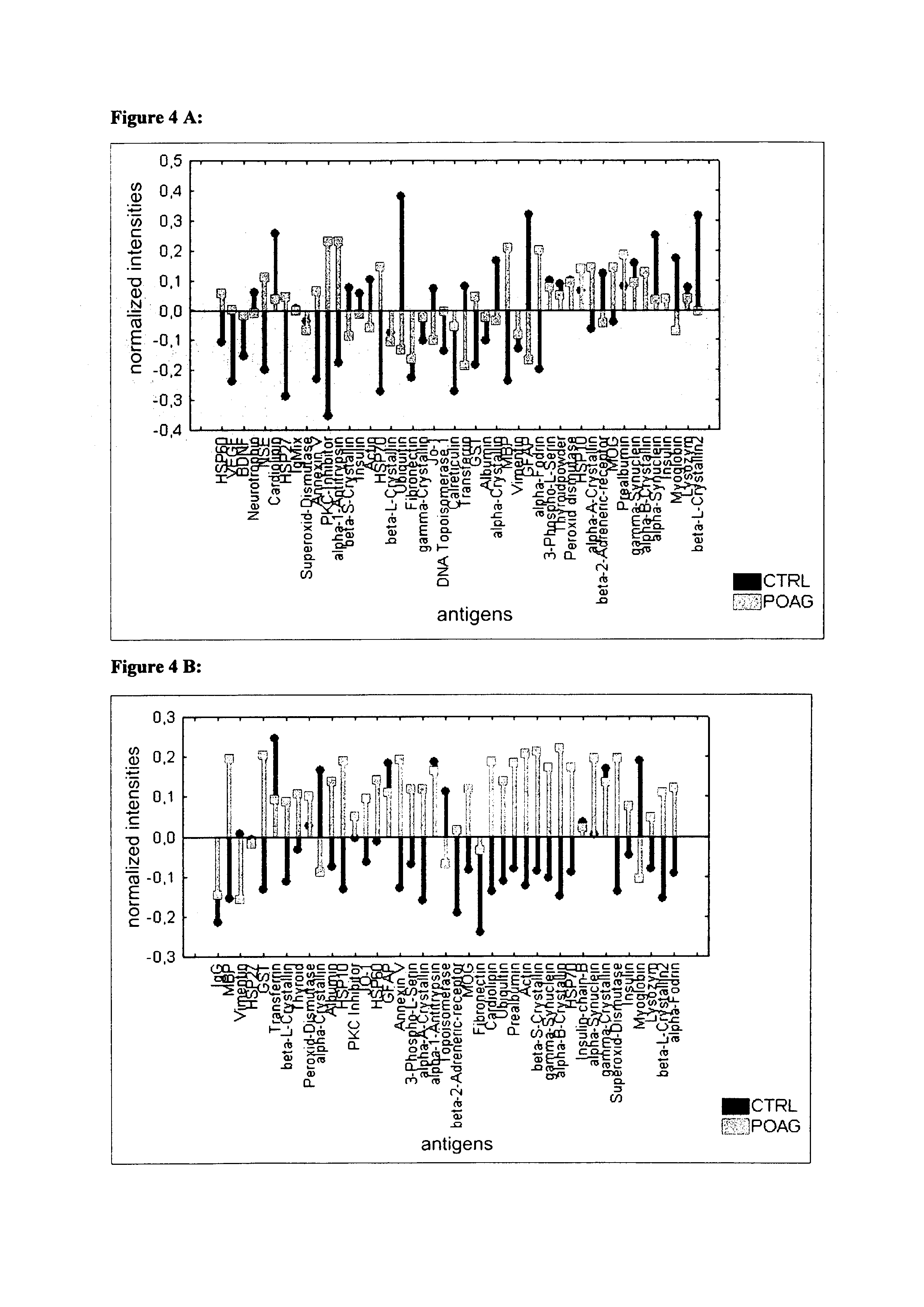Diagnostic Methods for Glaucoma
a glaucoma and glaucoma technology, applied in the field of medical diagnostics, can solve the problems of false negative, limited early detection methods for glaucoma, and no standard diagnostic tests to identify which persons have an elevated intraocular pressure, so as to prevent the cell death of retinal ganglion cells and stop the progression of glaucoma diseas
- Summary
- Abstract
- Description
- Claims
- Application Information
AI Technical Summary
Benefits of technology
Problems solved by technology
Method used
Image
Examples
example 1
Antigen Microarrays Comparing Autoimmunoreactivty in Sera and Aqueous Humor, with Characteristic Differences in Glaucoma Patients and Healthy Individuals
[0118]Sera and aqueous humor of patients with primary open-angle glaucoma (POAG; n=13) and healthy controls (CTRL; n=13) were used for antibody analysis. The protein arrays were prepared by spotting 40-100 different purified antigens (known biomarkers) onto nitrocellulose-coated slides. The arrays were incubated with sera (1:250) and aqueous humor (1:20) respectively. For visualization of the antibody-antigen-reactions arrays were treated with a fluorescence labeled anti-human IgG antibody, followed by fluorescence scanning. The signals emitted from secondary antibodies were digitized and the spot intensities were compared using multivariate statistical techniques.
[0119]Results: The intraindividual comparison revealed congruencies but also differences between antibody patterns of sera and aqueous humor. In both, aqueous humor and se...
example 2
Procurement of Sera and Aqueous Humor Samples
[0120]Procurement of samples was performed in accordance with the Declaration of Helsinki on biomedical research involving human subjects. Blood and aqueous humor was collected from all volunteers giving their informed consent. The blood samples were centrifuged at 1000 g and the serum was stored at −80° C. for subsequent analysis. Aqueous humor samples were stored at −80° C. directly after sampling. All participants were subject of a full ophthalmologic examination, including Goldmann Applanation, Tonometry, optical coherence tomography (OCT) and Heidelberg retina Tomography (HRT), at the Department of Ophthalmology (University of Mainz, Germany) and they were classified in accordance with the guidelines of the European Glaucoma Society. 31 patients, undergoing cataract surgery, with a mean age of 73 (SD±10) and 37 primary open-angle glaucoma patients (POAG; mean age: 67, SD±10) were included in this study. Cataract patients with no clin...
example 3
Preparation of Microarrays
[0121]We used highly purified proteins, purchased at Sigma-Aldrich (Germany) and BioMol (Hamburg, Germany), as antigens. Antigens were diluted to 1 μg / μl with PBS buffer containing 1.5% Trehalose for optimal printing conditions. The spotting of antigens was performed with both a non contact printing technology (sciFLEXARRAYER S3, Scienion, Berlin, Germany), based on piezo dispensing, and the commonly used pin based contact printing technique (OmniGrid100, Digilab Genomic Solutions, Ann Arbor, USA). Results were comparatively evaluated for spot morphology and spot to spot variability. For printing of the whole set of study microarrays the piezo based spotting technique was used. Each antigen was spotted in triplicate onto nitrocellulose-slides (Oncyte, nitrocellulose 16 multi-pad slides, Grace Bio-Labs, Bend, USA). As a positive and negative control we used mouse anti human IgG / A / M (10 μg / μl) and spotting buffer. The spotting process was performed at RT and ...
PUM
| Property | Measurement | Unit |
|---|---|---|
| temperature | aaaaa | aaaaa |
| pressure | aaaaa | aaaaa |
| molecular weights | aaaaa | aaaaa |
Abstract
Description
Claims
Application Information
 Login to View More
Login to View More - R&D
- Intellectual Property
- Life Sciences
- Materials
- Tech Scout
- Unparalleled Data Quality
- Higher Quality Content
- 60% Fewer Hallucinations
Browse by: Latest US Patents, China's latest patents, Technical Efficacy Thesaurus, Application Domain, Technology Topic, Popular Technical Reports.
© 2025 PatSnap. All rights reserved.Legal|Privacy policy|Modern Slavery Act Transparency Statement|Sitemap|About US| Contact US: help@patsnap.com



